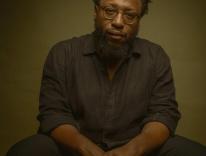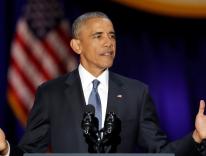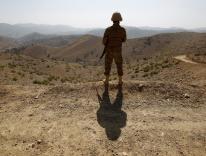It is no secret that President Barack Obama has conducted a very aggressive—and by many measures effective—campaign of targeted killings against Al Qaeda and the Taliban, both in Afghanistan and parts of Pakistan. It is less well known that the United States has also used unmanned drones to kill alleged terrorists in Yemen, Somalia, and the Philippines. The administration has made it known that the president himself insists on approving each drone attack. Obama did not want to delegate that responsibility, as President George W. Bush did, to either the Defense Department or the CIA, where he feared the temptation to broaden the list of possible targets was greater. That was a step in the right direction, but not a big enough step. Reliable estimates indicate that the United States has launched nearly four hundred drone attacks over the past four years, killing more than twenty-five hundred people.
Because drones are “precision” weapons, the administration claims that collateral civilian casualties are few. Yet how the administration defines who is a combatant raises concerns. Any adult male in the strike zone is considered fair game. Given the number of casualties and the silent and unseen operations of the drones, these assaults are the source of bitter resentment toward the United States. Many legal questions about the deployment of such weapons outside a recognized war zone also remain in dispute, especially because in the past the United States has condemned targeted killings when carried out by other nations. Is the United States now establishing a dangerous precedent, one that will be acted on by nations such as Russia and China against groups they consider to be terrorists? These are some of the questions that will surely be asked when the UN begins an investigation into U.S. drone strikes in January.
The administration has long argued that the drone program is conducted in a legally and morally scrupulous fashion. Evidently that claim was at best a partial truth. The New York Times recently reported that, as election day grew closer and Gov. Mitt Romney’s chances of becoming president seemed to improve, the White House scrambled to put into writing a set of explicit rules for when it is legal to assassinate a terrorist not operating in a combat zone. “One of the things we’ve got to do is put a legal architecture in place, and we need congressional help in order to do that, to make sure that not only am I reined in but any president’s reined in,” Obama said in October.
It is both sobering and disheartening to learn that it was only the prospect of a President Romney ordering drone attacks that pushed Obama to recognize that he himself needs to be more constrained by the law when making such life-and-death decisions. Administration sources told the Times that, in light of the election results, codifying standards and procedures for the use of drones is no longer an urgent concern. Such thinking is hubris of a very dangerous kind. Rules for using unmanned drones need to be carefully laid out, vetted by both the Justice Department and Congress, and then made public. Americans need to know what is being done in their name.
When operating outside a war zone even suspected terrorists deserve a measure of due process. Whenever possible, they should be arrested and brought to trial. On occasion, however, it may be imperative to resort to assassination if a terrorist presents an imminent threat to the United States. The use of drones may also be justified when terrorists are planning such attacks in areas where it is impossible for local authorities or the United States to capture them. Presumably that is often the case, for example, in Yemen and Somalia. Many critics of the current drone program argue that a special court should be set up to review administration decisions. Both the Bush and Obama administrations rejected that proposal, noting that Congress has authorized the president to conduct the war against Al Qaeda and the Taliban and that judicial review would compromise his authority as commander-in-chief. At the very least, the president’s justification for a targeted killing should be disclosed to the appropriate congressional oversight committees. Congress must be fully informed so it can take its share of responsibility. Finally, the president ought to disclose to the American people what criteria he uses in choosing targets, and his administration should report on the results of the strikes so that citizens can judge the accuracy of administration claims. It is often difficult to determine what constitutes a truly imminent terrorist threat to the United States. Yet when it comes to extrajudicial killing, the bar should be set very high, much higher than it seems to be at the moment.
Related: Below the Law? by the Editors
Illegal Tactic, Unending War, by William Pfaff
Please email comments to [email protected] and join the conversation on our Facebook page.
Previous Story
Nostra Aetate, 2012
Next Story
Better, Cheaper, Easier


